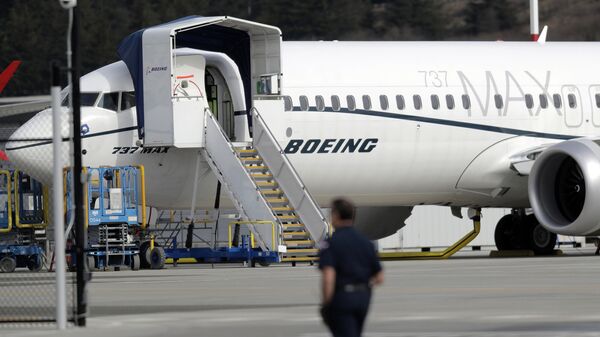"We are working towards final validation of the updated training requirements, which must occur before the MAX returns to commercial service, and which we now expect to begin in January," Boeing’s statement reads.
The statement also notes that the airplane is still in the process of obtaining Federal Aviation Administration (FAA) certifications for its flight control software, which was implicated as the cause behind the two crashes.
A Boeing 737 Max 8 plane operated by Ethiopian Airlines crashed on March 10 after taking off from Addis Ababa, Ethiopia, at around 8:30 a.m., killing all 157 people onboard. According to Ethiopian Airlines, contact with the plane was lost at 8:44 a.m., just a few minutes after it took off. On October 29, 2018, a Lion Air-operated 737 Max 8 crashed into the Java Sea just minutes after taking off from the Indonesian capital of Jakarta. All 189 people onboard were killed.
The plane’s new flight control system, the Maneuvering Characteristics Augmentation System (MCAS), was found to be the cause behind the accidents. The MCAS, designed to be a safety feature, is supposed to evaluate sensor data and push the plane’s nose down to keep it from stalling in the event that the nose of the plane is too high.
"At each step of this process Boeing has worked closely with the FAA and other regulators," Boeing said in its statement, also outlining five key steps the manufacturer has to take before the Max 8 can return to service.
"We're providing detailed documentation, had them fly in the simulators, and helped them understand our logic and the design for the new procedures, software and proposed training material to ensure that they are completely satisfied as to the airplane's safety.”
Boeing must also receive approval from the Joint Operational Evaluation Board regulatory body before the Max 8 is approved for commercial use.
Last month, Kevin McAllister, then the CEO of Boeing’s Commercial Airplanes division, resigned and was replaced by Stan Deal.
Several aviation experts have told Sputnik that the 737 Max’s problems are likely a product of Boeing competing with European multinational aerospace corporation Airbus’ A321LR aircraft. Multiple reports speculate that Boeing rushed its jet to market in an attempt to beat out its rival. In an effort to use larger, fuel-efficient engines, like Airbus, Boeing engineers realized that the older model 737-800 needed engineering changes. However, instead of designing an entirely new plane, Boeing engineers simply installed more fuel-efficient engines, placed further forward and higher on the wings than on the 737-800, and gave the jet a new name: the 737 Max.
When Boeing engineers realized that the position of the larger engines would cause the plane to stall by tilting its nose too high, they installed the MCAS “to compensate for the extra pitch produced by its larger engines at elevated angle-of-attack,” the Wall Street Journal reported in March.



